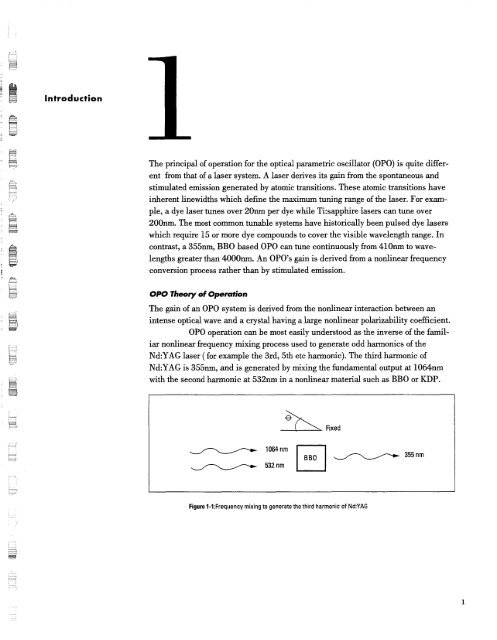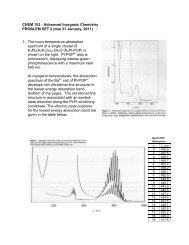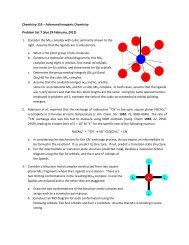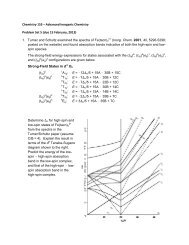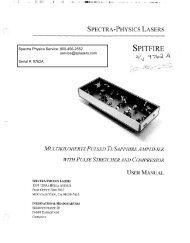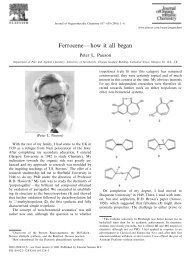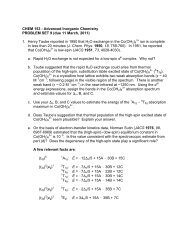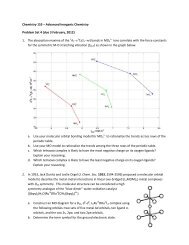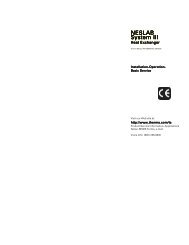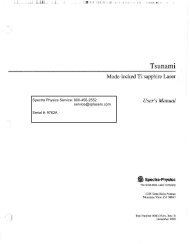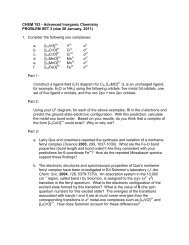metric Oscillator - Beckman Institute Laser Resource Center
metric Oscillator - Beckman Institute Laser Resource Center
metric Oscillator - Beckman Institute Laser Resource Center
You also want an ePaper? Increase the reach of your titles
YUMPU automatically turns print PDFs into web optimized ePapers that Google loves.
IntroductionThe principal of operation for the optical para<strong>metric</strong> oscillator (OPO) is quite differentfrom that of a laser system. A laser derives its gain from the spontaneous andstimulated emission generated by atomic transitions. These atomic transitions haveinherent linewidths which define the maximum tuning range of the laser. For example,a dye laser tunes over 20nm per dye while Ti:sapphire lasers can tune over200nm. The most common tunable systems have historically been pulsed dye laserswhich require 15 or more dye compounds to cover the visible wavelength range. Incontrast, a 355nm, BBO based OPO can tune continuously from 410nm to wavelengthsgreater than 4000nm. An OPO's gain is derived from a nonlinear frequencyconversion process rather than by stimulated emission.OPO Theory of OperationThe gain of an OPO system is derived from the nonlinear interaction between anintense optical wave and a crystal having a large nonlinear polarizability coefficient.OPO operation can be most easily understood as the inverse of the familiarnonlinear frequency mixing process used to generate odd harmonics of theNd:YAG laser (for example the 3rd, 5th etc harmonic). The third harmonic ofNd:YAG is 355nm, and is generated by mixing the fundamental output at 10anmwith the second harmonic at 532nm in a nonlinear material such as BBO or KDP.Fixed/-u 1064nm532nmFigure l-1:Frequency mixing to generate the third harmonic of Nd:YAG


